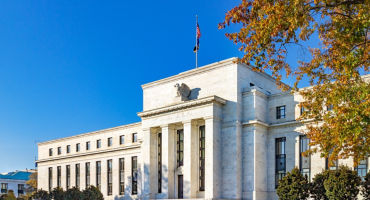- Portfolio Manager
Skip to main content
- Funds
- Insights
- Capabilities
- About Us
- My Account
Our Funds
Fund Documents
Global Multi-Strategy Fund
The views expressed are those of the author at the time of writing. Other teams may hold different views and make different investment decisions. The value of your investment may become worth more or less than at the time of original investment. While any third-party data used is considered reliable, its accuracy is not guaranteed. For professional, institutional, or accredited investors only.
My short answer to the question posed in the title here: A typical market bottom doesn’t really look much like what the US equity market experienced in June 2022, at least not historically speaking. Let’s consider the evidence.
Amid the S&P 500 Index’s recent (and, as of this writing, still-ongoing) rally, I’ve been fielding a lot of questions around whether or not the US market may have reached its 2022 low this past June. I’ve been inclined to think not, along with many other observers, but the market has clearly been testing that assessment over the last few months. With that in mind, I decided to turn to market history in search of some guidance on the matter.
I updated a prior analysis, focused on key factors — market volatility levels, inflation rates, price/earnings (P/E) ratios, credit spreads, and market drawdowns — that have historically been correlated to US equity market bottoms. Based on this model, which included the 22 US market bottoms since the late 1940s (Figure 1), the hypothesis that June 2022 may have marked this year’s bottom seems unlikely.
My analysis examined every time the S&P 500 went into a “downtrend” over the past 70+ years. Then, for each month within such a downtrend, it looked at the different factors cited above to determine the probability that the US market had in fact bottomed at that month-end. With the caveat that attempting to extrapolate the results to the current market environment is hardly an exact science, there were some interesting takeaways for equity investors.
Historically, in rank order, here are a few potentially telling indicators of a likely market bottom, vis a vis today’s market setting:
The five lefthand colored columns in Figure 1 highlight “z-scores” on these metrics (where high/green = higher probability of a bottom). The next column shows the probability of that particular month-end being the market bottom from a regression-based model. All previous bottoms had a 10%+ probability, with a norm in the range of 20% – 30%. Today’s odds are only around 5%.
To recap, using the approach described above, my overarching base case is that the US equity market has not yet found a near-term bottom. Essentially, while volatility certainly rose significantly in the second quarter, setting the market up for a tactical rally, it was still not enough to offset persistent headwinds from high market valuation and lofty inflation.
If you’re wary of relying on a quantitative model to make this assessment, the right-hand columns of Figure 1 show a simple alternative framework. The vast majority of market drawdowns ended when either: 1) the US economy was already in recession; or 2) the US Federal Reserve (Fed) had already cut interest rates. Exceptions to this rule involved either very little credit spread widening (1962, 1978, 1994), or the Fed backing off from hiking rates soon after the market had bottomed (as with the 2016 rate-hike pause and the 2019 policy “pivot.”)
These conditions are not in place right now:
1) While slowing to some degree, the US economy remains in pretty strong shape overall;
2) The Fed is continuing to raise rates, with no near-term prospect of a policy reversal; and
3) Investment-grade credit spreads have nearly doubled since the fall of 2019.

Broadening underway? 6 equity ideas for 2026
Continue readingFinding durable value amid shifting currents
Continue readingWhat does the new economic era mean for equities?
Continue readingURL References
Related Insights
Stay up to date with the latest market insights and our point of view.

Opportunity ahead: Optimism or illusion?
Explore our latest views on risks and opportunities across global capital markets.

The power of Asia’s dividends
Discover Asia’s quality dividend potential. With diverse income sources, structural tailwinds, and governance reforms at play, Asia offers a compelling mix of income, resilience, and long-term growth potential.

Broadening underway? 6 equity ideas for 2026
Andrew Heiskell and Nicolas Wylenzek see 6 key themes ahead for equity investors in 2026, including the durability of the AI investment cycle, the broadening of earnings growth beyond mega-caps, the potential for renewed value in international diversification and the growing need for equity investors to rethink risk hedging beyond bonds.

Low tide, sharp eyes: What to pick up
Fixed Income Managers Campe Goodman and Rob Burn share their outlook for credit in 2026 and discuss how investors can reposition for an environment where opportunities are harder to find.

Finding durable value amid shifting currents
Fixed Income Strategist Amar Reganti and Investment Director Marco Giordano explore how to approach bond investing in 2026. They see durable value for investors who can flexibly adjust to the shifting currents ahead.

Monthly Market Review — October 2025
A monthly update on equity, fixed income, currency, and commodity markets.

What does the new economic era mean for equities?
The twists and turns of 2025 have reinforced the sense that the global economy is undergoing a structural shift — towards higher inflation, more volatile business cycles and a potential gradual unwinding of decades-long globalisation. However, with flexibility and careful positioning, there are reasons to be positive about the outlook for global equities

Investing in 2026: prepare for inflationary growth
Macro Strategists John Butler and Eoin O'Callaghan share their annual macro outlook and discuss likely implications for markets and investors. They outline four potential scenarios graded by level of probability.

Rapid Fire Questions with Philip Brooks on Asian equities
In this edition of “Rapid Fire Questions,” Philip Brooks, investment director and equity strategist, answers key questions on Asian equities—exploring the structural drivers of the asset class, the traits of quality businesses, and the most compelling quality dividend opportunities today.

Chart in Focus: Is AI a bubble, or is it driving real market value?
AI isn't just about the hype. Our experts explain why this innovation is driving real market value and lay out the investment implications.

Chart in Focus: Is the Fed rate cut positive for risk?
In this edition of Chart in Focus, we examine how the Fed’s long-awaited interest rate cut may influence risk assets.
URL References
Related Insights
Monthly Market Review — October 2025
Continue readingBy